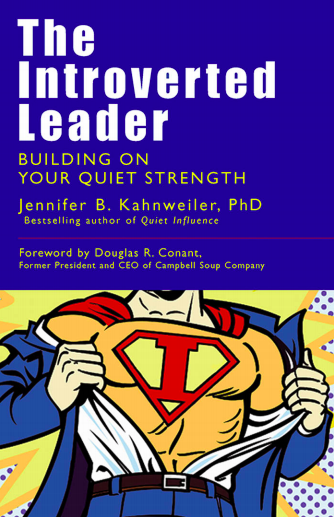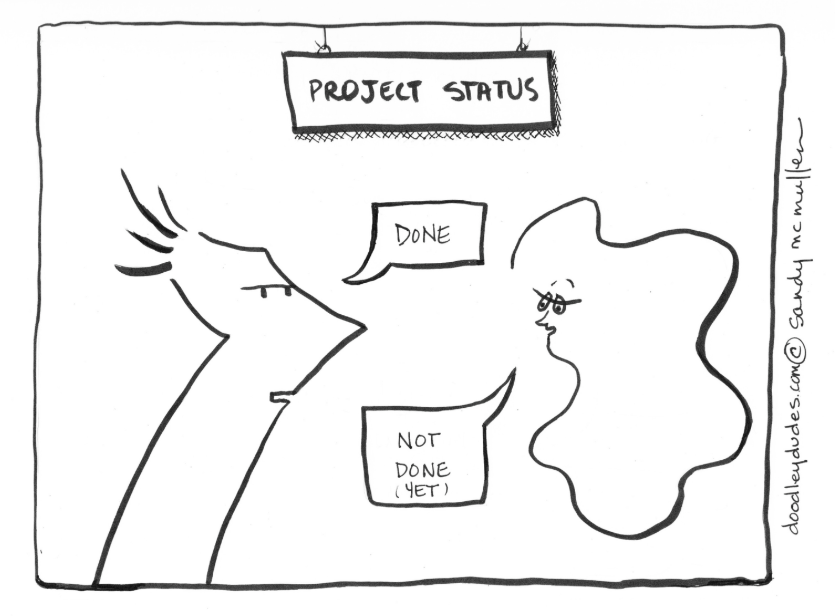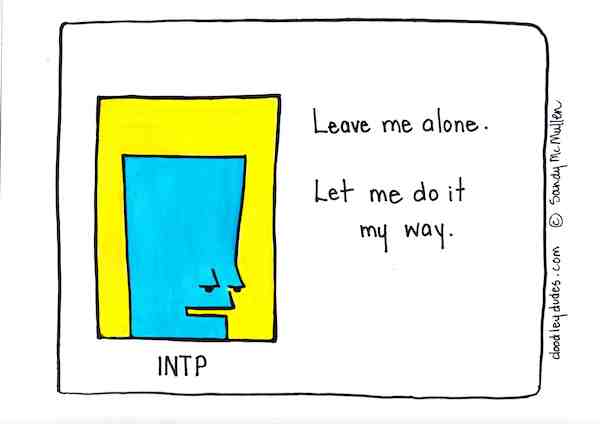
by Sandy | Feb 11, 2018 | MBTI Facts
An article by this title (Why Introverts Can Make the Best Leaders) was posted at Forbes.com. Jennifer B. Kahnweiler author of a book on how Introverts can leverage their strengths to become great leaders gives five valuable considerations in her article. They include the value Introverts provide in
- how they think before talking,
- how they are drawn to deeper more meaningful conversation,
- how the reassuring calm that is natural to them helps others,
- how they readily make use of the power of the written word, and
- how they take time to refuel their thinking, creativity and decision making.
It is a short article that is a teaser for what looks like a very worthwhile book. The Introverted Leader: Building on Your Quiet Strength
It is well worth 3 minutes of your time in popping over to read this article in full.
A mention I made of this article on Facebook sparked a conversation about the “below the radar” aspect of the power and strengths of many with a preference for Introversion in organizations. A couple of coaching/consulting colleagues shared their experience regarding the number of clients they had who they recognized as being quiet “stars”. The question then is how to work with your preferences to let your light shine.
Kahweiler’s article at one point talks about the use of Social Media tools to make the strengths of the Introvert more visible to others. Creative, inspiring and practical approaches to help make use of all ones gifts and talents in the workplace – now that sounds like a winner to me.

by Sandy | Feb 10, 2018 | MBTI Facts
Those 4 letters that make up your MBTI type are a code to how those preferences interact. The J and P (Judging and Perceiving) refer to how you operate in the world J’s preferring the decision making functions of Thinking or Feeling.
The MBTI types with J in their code want to make a decision after sufficient information has been gathered. Once the decision has been made they are often “early starters”. They love to check things off their “to do” list.
Those who have P in their code want to defer making a decision and to continue to gather information. From their perspective new information will alter the whole decision. A Jesuit scholar once told me that the Latin root of the word decide meant “to kill off”. Imagine killing off all those delicious possibilities by deciding on just one of them.
My personal experience is that there is something about adrenalin for the P. I can try for the life of me to start early but there is no “juice” and I can’t see the path. A deadline charging toward me creates focus and clarity. So I make the deadline – sometimes by the skin of my teeth but I make it.
BTW -this can be the source of conflict in the workplace and on vacation with friends – I’ll bet you have a story to share.

by Sandy | Feb 9, 2018 | MBTI Facts
Getting to know who we are ought to be easy. We look at ourselves in the mirror everyday. That only gives us a snapshot or perhaps a delusion if we think that is all there is. Using the MBTI as a tool for gaining self knowledge is an excellent choice, but as my response to this reader’s request illustrates it isn’t always accomplished with a first glance.
Can you do an article about ENFP and INFP differences?
I’m NFP but don’t know whether E or I.
(To make things more complicated I’m Enneagram 3 which is externally focused, so it is confusing me.)
When people first meet the MBTI model, they often look at it as a collection of preferences. So they try to decide am I really “Extroverted” or am I more “Introverted”. The four letters that make up the MBTI type are really a code that determines how the four functions of Intuiting, Sensing, Thinking and Feeling interact. This means that a person with preferences for INFP has a different dominant or leading function than a person with ENFP preferences. I sometimes think of dominant function as a persons first language. While we use all functions they are not all used equally and this flavours how we show up in the world.
The INFP leads with Introverted Feeling. They approach life looking through a lens of what is important and what is of value in a universal context. They can see the subtle differences in a constellation of factors such as the relative value of all the component parts involved – the various groups, the individual people, their actions, the beliefs and thinking underlying the issue. All of this is measured against their own inner value system to see what is in alignment and what isn’t.
The INFP “loves” the authentic in people and draws that out in them. Integrity, harmony, values and identity are words that resonate with the INFP. They are interested in what is deep and meaningful to the individual and they are not interested in people who don’t live up to their ideals.
On the other hand ENFPs lead with Extroverted Intuition. Having this dominant function is like having radar for the unspoken, the random occurrences surrounding a situation and a sudden knowing of what it all means. Brainstorming is like oxygen and the ENFP floats possibilities out to see which ones will rise to the top. They often follow several tangents at once without attachment and this ability allows them to navigate change as part of exploring life.
The ENFP is an inspiration junkie and wants to inspire and be inspired. They are known for their enthusiasm but have to watch to temper their enthusiasm with reality.
Your Dominant Function
Again it comes down to how do you know? The best way is always to combine taking the MBTI assessment tool through a certified practitioner combined with the coaching they will offer to do a self- determination of type.
I also recommend getting curious over a period of time and becoming a detached observer of your behaviour. On a personal note- even though I spend oodles of time alone and have become less and less social over time – the ENFP dominant function of Extroverted Intuition stands out a mile. Not only do I experience it I hear feed-back from others that this is what they experience too. At the same time I know that while I appreciate deep meaningful conversation I have no interest in sustaining that in the same way an INFP can and does.
The Step 2 Distinctions
To go back to the attitudes of Introversion and Extroversion for a moment. When I use the MBTI, I prefer the Step 2 inventory which breaks down each of the preference pairs into 5 sub-pairs.
People may be out-of-preference on one side of the equation that differs from their type code and this not only adds a layer of complexity but also explains a lot.
One individual who stands out had results that said he was ENTP but he was out-of-preference on the Introverted side for 2 of the 5 distinctions for Extroversion and Introversion. He determined that INTP was a better fit for who he was and how he operated in real life. The team that reported to him also gained an understanding of how to best communicate with him. They could see that he “went to his cave” literally and figuratively at times and yet he would respond when asked so that they had permission to ask.
Also I have seen it work that understanding potential out-of-preference distinctions allowed the person to be really comfortable with their MBTI results and yet fit in this seemingly confusing aspect of their behaviour. One person who typed as an Extrovert was out-of-preference for one of the 5 distinctions on the Introverted side. He was able to explain to his team that there were times were he felt quite shy. The team members confessed that they had experienced this and felt that understanding this distinction helped them not to take this shift in behaviour personally.
As for the Enneagram
Each of these personality tools needs to be first looked at on their own before trying to see how they work along side each other. They do not readily overlap in all places and even so experts do not agree on how they do. My ENFP preferences are not typical for an Enneagram 6 but make sense to me when I see my strong 7 wing.
My suggestion is to look at these 2 tools as separate entities for now. The Enneagram is not a fast study IMHO so be okay with being curious. You are simply fascinating and worth the time investment to explore.
I’d love to hear if this helped you come to a landing place and also love to hear how others resolve MBTI type confusion.

by Sandy | Feb 8, 2018 | MBTI Facts
A common conversation I have with people who are “anti-typology” is that they don’t want to be put in a box. My suspicion is that there is often a secondary conversation that isn’t overt that says “No one is going to tell me what I can or cannot do.”
I agree with not wanting to be put in a box however I disagree that that is what type knowledge does. It isn’t “knowing” type that puts you in a box. What type does is bring awareness to what type of box you might already be in so that you have more flexibility available to you.
As for trying to control another person’s behaviour. I don’t think it works well – ever. God invented two year olds to teach us this. Knowing your MBTI preferences isn’t a prescriptive as in “All people with these preferences must do this.” However the MBTI does give you a guide for what are ways of working and being that are aligned and therefore are less demanding on your energy resources.
Call me crazy but I like my struggle to be optional.
What’s hard and a struggle in your work? Other than volume of work demanded, I suspect that if your work is draining your energy, you may be working against your type in some aspect of what you are doing.

by Sandy | Feb 6, 2018 | MBTI Facts
INTP – How to get along with me
The quote in this doodle came from the lips of an INTP in response to the question “What’s the best way to get along with you?”
My experience is that an INTP may indeed like collaborative efforts when they can do their piece. That usually involves the big picture. Did I hear the word strategy?
The thing is not to weigh them down with “how to” questions or the kind of details that aren’t on their radar screen

by Sandy | Feb 4, 2018 | MBTI Facts
That “Thinking is superior to Feeling” is a myth. First let me give some textbook information and then I will get to some opinion.
MBTI Theory
Thinking and Feeling are both rational functions used for judgment. Both follow the laws of reason and function to evaluate the constant flow of perceptions – the sensations and intuitions of the Perceiving functions.
Both Thinking and Feeling are functions used in decision-making.
The Thinking function makes logical connections between ideas and is oriented towards cause and effect, objectivity and the impersonal application of reason. Impartiality and neutrality are applied equally to both the people who may be affected by the decision and on a personal level.
The Feeling function looks at the values and relative merit of the issues. In order to make this kind of comparative analysis Feeling relies on having an understanding of the values of all involved. Whereas Thinking is more objective, Feeling is more subjective. The MBTI Manual (Myers, McCauley, Quenk and Hammer) quotes Jung “Feeling, like Thinking, is a rational function, since values in general are assigned according to the laws of reason.”
Thinking people have feelings and those with a preference for Feeling can follow a logical argument. However, since Feeling is subjective, it is not as easy to see as the logical, linear process of the Thinking process. To me this may be the crux of this myth – for a person with a preference for Feeling may not have immediate access to explain their decisions from a perspective of logic alone and this is precisely what the person with a preference for Thinking is seeking to hear.
Statistically there is a preponderance of individuals with Thinking/Judging in executive positions. Both Thinking and Feeling functions play a role as much in business as in other realms and those with a preference for Feeling can be equally as effective in leadership positions. In general, decisions that benefit from the input of both functions are more well-rounded decisions.
Personal Musings and Wonderings
I admit to some “Thinking envy”. I was interviewing a woman (ENTJ) for an Insight Portrait that I was going to paint for her. She was so clear and decisive – I described it as if she was the prow of an icebreaker – she cut through everything – no mess – no confusion – no internal debate. She saw, she analyzed, she decided, she moved forward. In contrast my decision making is often more time consuming and convoluted as I compare and contrast the value of each option.
Thinking can be looked at through the five facets of logical, reasoning, questioning, critical and tough contrasted with the five on the Feeling side of the pairs – empathetic, compassionate, accommodating, accepting, tender. At times when I am in conversation with someone with clear preferences for either the questioning or critical facets, I can feel my confidence fade. Being in a position of needing to justify my decisions is not comfortable in the moment. I typically think of my witty, clever comments in the car on the way home.
I can understand the power of the Thinking preference when difficult decisions have to made on a timeline and defended to stakeholders.
However, I don’t agree that Feeling is a lesser function. If the decision is the right decision for the circumstances both Thinking and Feeling preferences will hopefully lead to the same place. Thinking may get there faster and don’t we worship “faster” in our society? In terms of execution Feeling may have the upper hand for they will have already explored how the decision engages the people involved.






